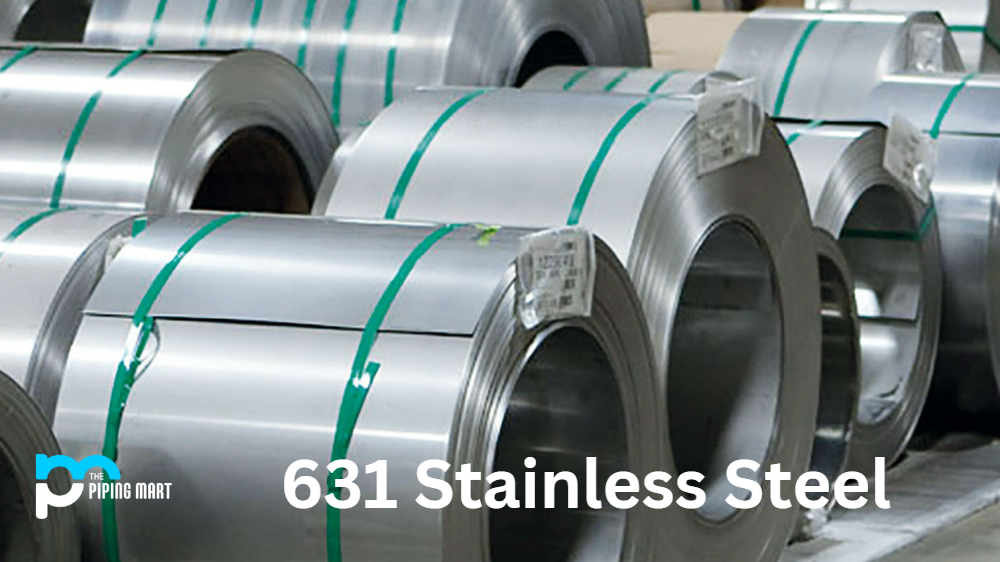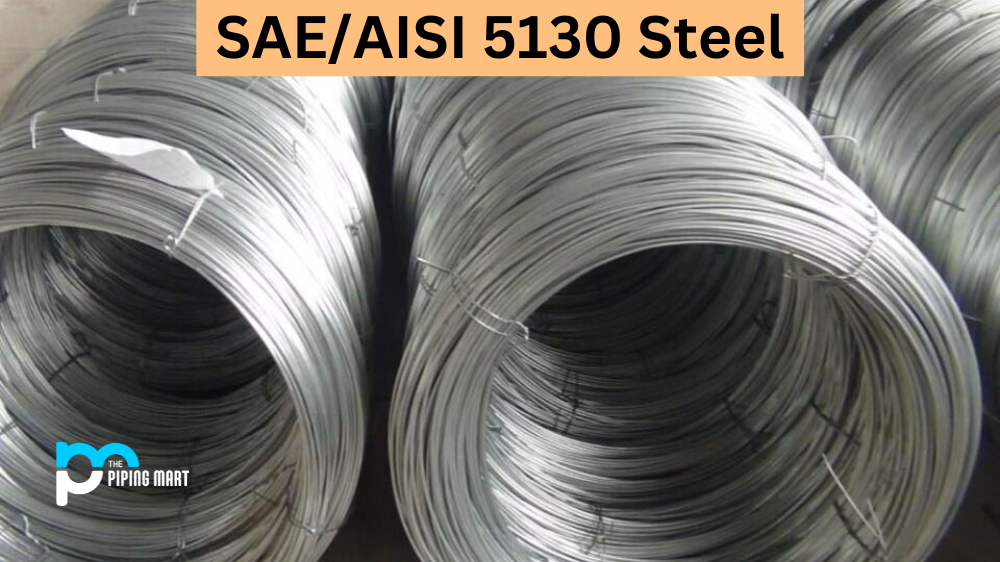Stainless steel is a versatile material that finds applications in various industries due to its excellent properties, such as corrosion resistance, high strength, and durability. One such type of stainless steel is the 631 stainless steel, also known as 17-7PH. This alloy is precipitation-hardened stainless steel with a unique combination of mechanical, physical, and chemical properties. This blog post will dive deeper into 631 stainless steel’s composition, properties, uses, heat treatment, machining, and welding.
631 Stainless Steel Composition
The 631 stainless steel is an iron-based alloy that contains chromium, nickel, and aluminium. Other elements such as carbon, manganese, phosphorus, sulfur, and silicon are also in small amounts. The aluminium content in this alloy gives it its unique precipitation-hardening property.
| C: | Mn: | Si: | P: | S: | Cr: | Ni: | Al: |
| <0.09 | <1.0 | <0.5 | <0.025 | <0.025 | 16.00 – 17.25 | 6.50 – 7.75 | 0.75 – 1.25 |
631 Stainless Steel Mechanical Properties
The 631 stainless steel exhibits high tensile strength, toughness, and ductility. Depending on the heat treatment, its tensile strength ranges from 1035 MPa to 1275 MPa. The alloy has a low modulus of elasticity and is highly resistant to fatigue and stress corrosion cracking.
| Proof strength
Rp0.2 (MPa) |
Tensile strength
Rm (MPa) |
Impact energy
KV (J) |
Elongation at fracture
A (%) |
Reduction in cross section on fracture
Z (%) |
As-Heat-Treated Condition | Brinell hardness (HBW) |
| 685 (≥) | 438 (≥) | 41 | 23 | 44 | Solution and Aging, Annealing, Ausaging, Q+T,etc | 242 |
631 Stainless Steel Physical Properties
The 631 stainless steel has a 7.8 g/cm3 density. At room temperature, its electrical conductivity is 1.3% of copper, and its thermal conductivity is 17.9 W/m-K. The alloy is also non-magnetic.
631 Stainless Steel Equivalent
631 Stainless Steel Uses
The 631 stainless steel is widely used in various applications such as aerospace, automotive, chemical processing, and medical devices. It finds applications in producing springs, washers, fasteners, valves, and aircraft fittings. Due to its biocompatibility, the alloy is also used in making surgical instruments and orthopaedic implants.
631 Stainless Steel Corrosion Resistance
The 631 stainless steel is highly corrosion-resistant in seawater, acids, and alkalis environments. It offers better corrosion resistance than 304 and 316 stainless steel due to its higher chromium content. However, the alloy is susceptible to pitting and crevice corrosion in chloride-containing solutions.
631 Stainless Steel Heat Treatment
The 631 stainless steel is a precipitation-hardening alloy that requires heat treatment to achieve maximum strength and hardness. The heat treatment involves two steps: annealing and ageing. Annealing is done to improve ductility, while ageing is done to increase strength and hardness.
631 Stainless Steel Machining
The 631 stainless steel is a hard alloy for machines due to its high strength and toughness. It requires a rigid set-up and sharp cutting tools to achieve satisfactory results. The alloy can be machined in the annealed or aged condition.
631 Stainless Steel Welding
The 631 stainless steel can be welded using various methods, such as gas tungsten arc welding (GTAW), gas metal arc welding (GMAW), and resistance welding. Preheating and post-weld heat treatment are recommended to avoid cracking and improve the weld’s mechanical properties.
Conclusion
631 stainless steel is a unique and versatile alloy with excellent mechanical, physical, and chemical properties. Its corrosion resistance, strength, and durability make it a popular choice in various industries. Understanding its composition, properties, uses, and processing methods can help you decide on its application in your next project.

Abhishek is a seasoned blogger and industry expert, sharing his insights and knowledge on various topics. With his research, Abhishek offers valuable insights and tips for professionals and enthusiasts. Follow him for expert advice on the latest trends and developments in the metal industry.




